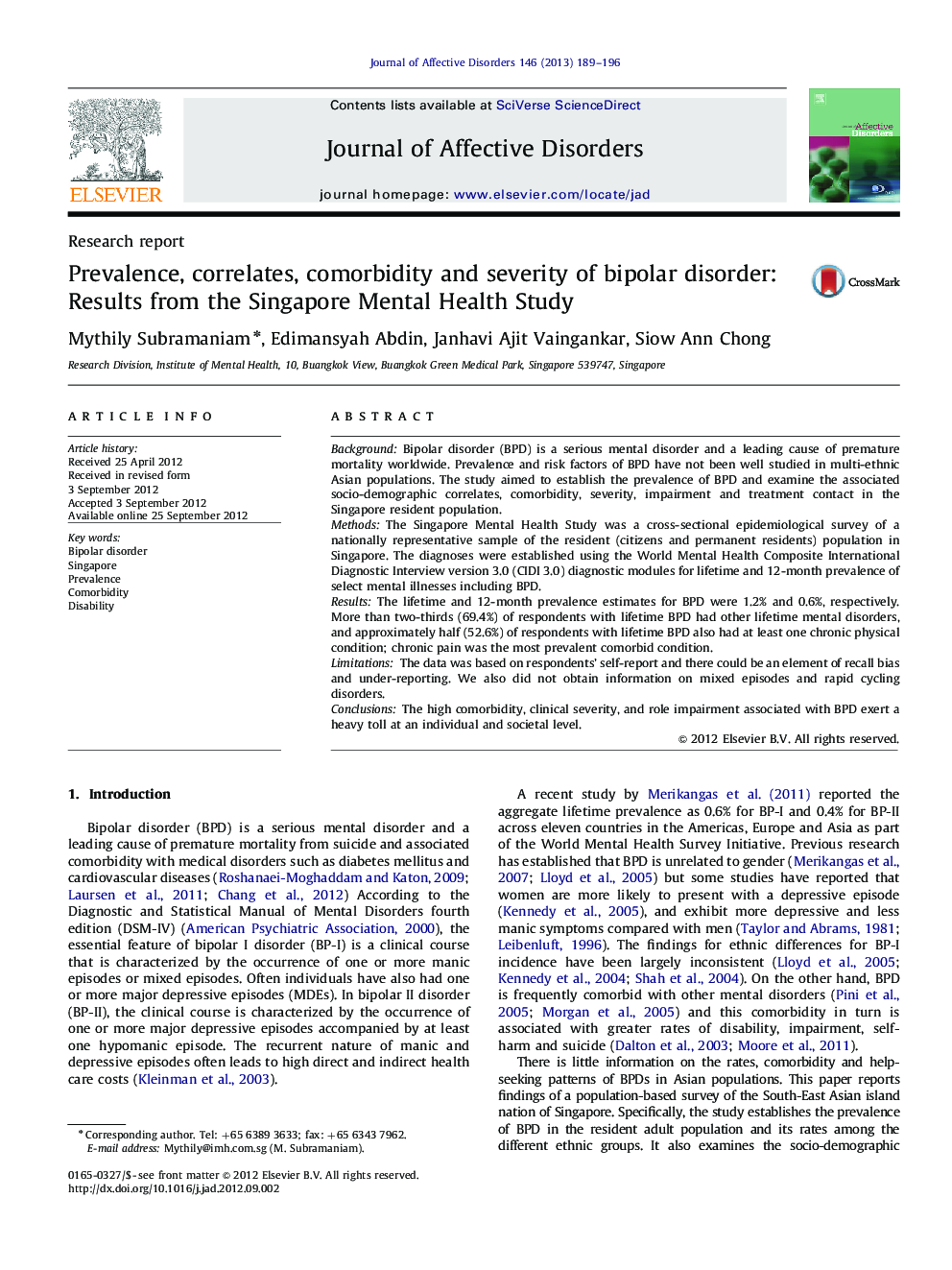| Article ID | Journal | Published Year | Pages | File Type |
|---|---|---|---|---|
| 4186263 | Journal of Affective Disorders | 2013 | 8 Pages |
BackgroundBipolar disorder (BPD) is a serious mental disorder and a leading cause of premature mortality worldwide. Prevalence and risk factors of BPD have not been well studied in multi-ethnic Asian populations. The study aimed to establish the prevalence of BPD and examine the associated socio-demographic correlates, comorbidity, severity, impairment and treatment contact in the Singapore resident population.MethodsThe Singapore Mental Health Study was a cross-sectional epidemiological survey of a nationally representative sample of the resident (citizens and permanent residents) population in Singapore. The diagnoses were established using the World Mental Health Composite International Diagnostic Interview version 3.0 (CIDI 3.0) diagnostic modules for lifetime and 12-month prevalence of select mental illnesses including BPD.ResultsThe lifetime and 12-month prevalence estimates for BPD were 1.2% and 0.6%, respectively. More than two-thirds (69.4%) of respondents with lifetime BPD had other lifetime mental disorders, and approximately half (52.6%) of respondents with lifetime BPD also had at least one chronic physical condition; chronic pain was the most prevalent comorbid condition.LimitationsThe data was based on respondents’ self-report and there could be an element of recall bias and under-reporting. We also did not obtain information on mixed episodes and rapid cycling disorders.ConclusionsThe high comorbidity, clinical severity, and role impairment associated with BPD exert a heavy toll at an individual and societal level.
